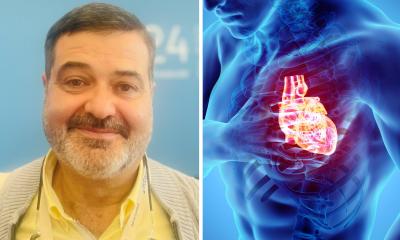From bad breath to cardiac infarction
More than half of Germany’s population aged between 18 and 74 years cannot show off a gapless set of teeth, and that’s similar in France and worse only in Poland, according to a 2012 study, which also investigated oral hygiene.

At the recent German Federation of Dentists FVDZ meeting, Professor Thomas Hoffmann, Director of the Department of Dental Medicine at Dresden University Hospital, emphasised that periodontitis, which causes bad breath, can result in serious health consequences, such as cardiac infarction. Enhanced collaboration between medical disciplines is needed to contain this problem, he urged.
Periodontitis is a polybacterial oral infection defined by host reactivity, he explained. ‘Its progress is influenced by risk factors such as behaviour, genetics, morbidities and age. They include smoking habits and diabetes as well as osteoporosis, viral infections, gender, as well as socio-psychological aspects.’ Periodontitis, he underlined, can induce the risks for chronic ischaemic cardiovascular disease (CVD), diabetes, premature births, osteoporosis and COPD.
Periodontitis micro-organisms can be transported from mouth into bloodstream while chewing, or during diagnostic and therapeutic activities. Periodontal pathogens have been found in atheromatous plaques. Pro-inflammatory proteins, such as cytokines in the serum of periodontitis patients, also function as markers for CVD; increased formation of special proteins, such as HSP and CRP in periodontitis cases, increases the risk of CVD; the plasma fibrinogen titre is increased in periodontitis; add to this the overall risk factors mentioned.
A multi-gene model
Host reactivity in the context of chronic inflammation is determined by a complex set of gene-gene and gene-environment interactions, the professor pointed out. Individual susceptibility can result from various genetic variations of pro-inflammatory proteins and their receptors, from components of the immune system as well as proteins that are involved in tissue reformation, such as matrix-metallo proteinases, cathepsines, and the vitamin D receptor. The systemic effect of periodontitis therapy demonstrates these complex interactions and points to the key role of this therapy as medically required. It leads to improved endothelial dysfunction in cases of severe periodontitis. The therapy reduces CRP titres, and – combined with antibiotics – of IL 6 and TNF[a] titres, as well as total and LDL cholesterol. Interventional studies on Par therapy demonstrate that HbA1c is reduced significantly.
Collaboration to improve outcomes
Interaction between dentists and physicians from other specialties is not common practice, Prof. Hoffmann explained. ‘In a significant number of cases, information exchange about a patient would enable precise diagnosis and help define suitable holistic therapies.’ This would support the best possible outcome for a patient. ‘Oral health,’ he stressed, ‘is an important part of the whole picture and combined therapies help reduce severe risks.
22.05.2013











